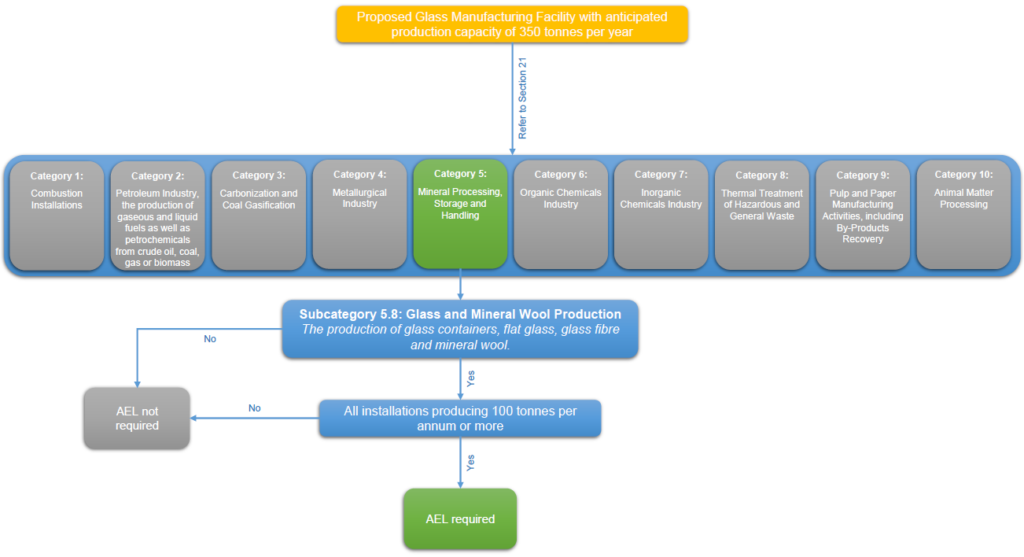Air Quality Self-Help Guide (Part 1) – Atmospheric Emission License (AEL) – What? Why? When?
Management of air pollution sources in South Africa through an Atmospheric Emission License necessitates legally and scientifically complex regulation. Notwithstanding this, non-conformance with these requirements can lead to community health impacts, fines, suspension of site activities and potentially significant reputational impacts. Conversely, misinterpretation of these requirements may even lead to unnecessary or excessive financial investment in air pollution control technologies or techniques that the law does not demand.
Most industrial facilities in operation and those which are planned need to fully accommodate laws related to air quality. WKC Group’s air quality team has initiated a series of ‘self-help’ guides to support industrial operators, government EPOs, and EIA Consultants to interpret, in a systematic way, the implications of air pollution regulations and their applicability for sectors described under Section 21 of the Air Quality Act (AQA).
The Self Help guide is provided in anticipation of an online tool available soon on our website which will interactively support the user to determine the applicability of Section 21 of the AQA to a particular process, site or planned development, and the likely need for an Atmospheric Emissions Licence (AEL).
In this series of short articles WKC’s air quality specialists highlight the key regulations applicable to air quality management in South Africa. We explain the legislative requirements, provide insight into their applicability, and highlight any reporting obligations that may arise.
This first instalment provides background to the atmospheric emission license (AEL) process and its purpose in centrally regulating atmospheric emissions in South Africa.
What is an AEL?
The key regulatory framework for air quality management in South Africa is the National Environmental Management Air Quality Act, Act 39 of 2004. The fundamental air quality permitting tool stipulated within the Air Quality Act is the Atmospheric Emission License (AEL). An AEL is a permit allowing license holders to demonstrate certain processes or appliances are operated in accordance with national air quality regulations.
An AEL is required when the operation of ‘listed activities’ results in atmospheric emissions that exceed specified ‘trigger’ values. Examples of the types of operations that are considered listed activities include combustion installations, petroleum and metallurgical industries, organic and inorganic chemical industries as well as pulp and paper manufacturers.
Why is an AEL required?
The purpose of an AEL is to regulate certain emission sources with the overall objective of reducing potential impact to community health and the wider environment. In accordance with the Air Quality Act, an AEL or provisional AEL (PAEL) is required for a facility to operate should a listed activity1 exceed the respective threshold value. The facility can only operate if it is authorised to do so by the licensing authority, and only if the operator meets the stipulated conditions and requirements within the AEL.
When is an AEL required?
An AEL is required in the following instances, where both the listed activity1 occurs and threshold limits are triggered by the facility / operator:
- Development of a new facility or process;
- Variations to emission rates and / or raw materials which may increase pollutant emissions; and,
- Any material changes or amendments to an existing AEL.
The AEL process needs to be undertaken in conjunction with an Environmental Impact Assessment (EIA) process for new or modified facilities (described in items 1 & 2 above).
For first time applicants, a successful application will result in the issue of a PAEL, enabling commissioning of the listed activity1 (this is similar in concept to a learner drivers licence). The PAEL is valid for one year from the date of facility commissioning, which may be extended by the licensing authority for an additional year (should there be good cause). The PAEL can only be upgraded to an AEL after satisfactory demonstration that the facility can and does operate in accordance with the conditions of the PAEL for at least six months.
Conducting a listed activity without an AEL?
No person may conduct a listed activity, that triggers the respective threshold, without an AEL. The consequences of this unlawful practice are stipulated in Section 22A of the Act, which outlines a separate process which must be followed. Once the licensing authority accepts the Section 22A application, a fine may be issued to the facility for operating illegally and after payment is made, a new AEL application process can commence.
Example AEL Query
A new glass manufacturing facility is proposed with an anticipated production capacity of 350 tonnes of glass per year, is an AEL required? This is answered in the following flow diagram.

______________________
1 Any activity listed in terms of Section 21, which result in atmospheric emissions and which the Minister/MEC believes have or may have a significant detrimental effect on the environment, including health, social conditions, economic conditions, ecological conditions, or cultural heritage.


